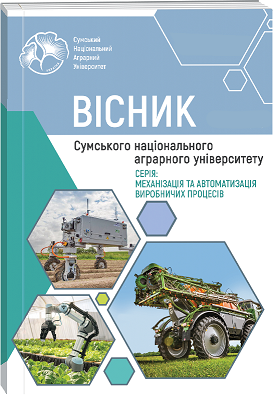DEVELOPMENT OF JELLY MARMALADE USING VEGETABLE RAW MATERIALS
Abstract
The article reflects the expediency of application and experimental justification of the use of tomato puree and table red beet powder in jelly marmalade with the aim of expanding the assortment, increasing the biological value and creating competitive products on the market. According to the conducted research, the technology of jelly marmalade was developed using tomato paste and red beetroot powder. At the first stage of the study, a rational concentration of agar, sugar and molasses was chosen. As a result of conducting a rheological study of gel density, the ratio (agar 1%: molasses 15%: sugar 60%) was chosen. As the sugar concentration increases, the strength of jelly increases, but when the sugar concentration is 70% or more, the strength decreases. When the concentration of molasses increases, the density increases, but at a concentration of more than 15%, a decrease in density is also observed. Tomato paste was prepared by boiling tomato juice to a SR content of 24.3% and added to the agar-molasses-sugar mixture in the amount of 1%, 2.5%, 5%, 7.5% of the total mass. After that, a rheological study of the density of the gel was carried out. It was established that with an increase in the concentration of tomato paste, the density of the gel decreases, this is explained by the effect of the acidity of the tomato paste. Therefore, the optimal concentration of tomato paste of 2.5% was chosen. Table red beet powder was used in the recipe to replace the synthetic dye in the amount of 1%, 2%, 3%, 4% and 5% of the total mass. According to organoleptic indicators, the sample with a powder concentration of 2% received the highest number of points. Because with an increase in the powder content, a rich aftertaste of beetroot is felt, which is not desirable, and at a concentration of less than 2% in combination with tomato paste, no changes in color occurred. Therefore, the use of tomato paste and powder from table red beet made it possible to improve the biological value of jelly marmalade, due to the increased content of dietary fibers, vitamins and minerals.
References
2. Beckles, D. M., Hong, N., Stamova, L., & Luengwilai, K. (2011). Biochemical factors contributing to tomato fruit sugar content: a review. Fruits, 67(1), 49–64. doi:10.1051/fruits/2011066
3. Chandra, H. M., Shanmugaraj, B. M., Srinivasan, B., & Ramalingam, S. (2012). Influence of Genotypic Variations on Antioxidant Properties in Different Fractions of Tomato. Journal of Food Science, 77(11), C1174–C1178. doi:10.1111/j.1750-3841.2012.02962.x
4. Friedman, M. (2013). Anticarcinogenic, Cardioprotective, and Other Health Benefits of Tomato Compounds Lycopene, α-Tomatine, and Tomatidine in Pure Form and in Fresh and Processed Tomatoes. Journal of Agricultural and Food Chemistry, 61(40), 9534–9550. doi:10.1021/jf402654e
5. Gascuel, Q., Diretto, G., Monforte, A. J., Fortes, A. M., & Granell, A. (2017). Use of Natural Diversity and Biotechnology to Increase the Quality and Nutritional Content of Tomato and Grape. Frontiers in Plant Science, 8. doi:10.3389/fpls.2017.00652
6. Gubsky, S., Artamonova, M., Shmatchenko, N., Piliugina, I., & Aksenova, E. (2016). Determination of total antioxidant capacity in marmalade and marshmallow. Eastern European Journal of Advanced Technologies, 4 (11), 43-50
7. Khachik, F., Carvalho, L., Bernstein, P. S., Muir, G. J., Zhao, D.-Y., & Katz, N. B. (2002). Chemistry, Distribution, and Metabolism of Tomato Carotenoids and Their Impact on Human Health. Experimental Biology and Medicine, 227(10), 845–851. doi:10.1177/153537020222701002
8. Leiva-Brondo M., Valcárcel M., Cortés-Olmos C., Roselló S., Cebolla-Cornejo J., Nuez F. Exploring alternative germplasm for the development of stable high vitamin C content in tomato varieties. Sci. Hortic. 2012;133:84-88. DOI 10.1016/J.SCIENTA.2011.10.013
9. Li, H., Deng, Z., Liu, R., Young, J. C., Zhu, H., Loewen, S., & Tsao, R. (2011). Characterization of Phytochemicals and Antioxidant Activities of a Purple Tomato (Solanum lycopersicumL.). Journal of Agricultural and Food Chemistry, 59(21), 11803–11811. doi:10.1021/jf202364v
10. Mes, P. J., Boches, P., Myers, J. R., & Durst, R. (2008). Characterization of Tomatoes Expressing Anthocyanin in theFruit. Journal of the American Society for Horticultural Science, 133(2), 262–269. doi:10.21273/jashs.133.2.262
11. Raiola, A., Tenore, G., Barone, A., Frusciante, L., & Rigano, M. (2015). Vitamin E Content and Composition in Tomato Fruits: Beneficial Roles and Bio-Fortification. International Journal of Molecular Sciences, 16(12), 29250–29264. doi:10.3390/ijms161226163
12. Silva Souza, M. A., Peres, L. E., Freschi, J. R., Purgatto, E., Lajolo, F. M., & Hassimotto, N. M. (2020b). Changes in flavonoid and carotenoid profiles alter volatile organic compounds in purple and orange cherry tomatoes obtained by allele introgression. Journal of the Science of Food and Agriculture, 100(4), 1662–1670. doi:10.1002/jsfa.10180
13. Shmatchenko, N. V. (2018). Improvement of jelly-fruit marmalade technology using fruit and vegetable cryo-additives: thesis Ph.D. technical Sciences: 05.18.01. Kharkiv, 205 p.
14. Wang, D., & Seymour, G. B. (2017). Tomato Flavor: Lost and Found? Molecular Plant, 10(6), 78784. doi:10.1016/j.molp.2017.04.010
15. Yarmosh, T. A., & Pertsevoi, F. V. (2023). ANALYSIS OF THE USE OF WALNUTS IN THE FOOD INDUSTRY. Scientific Bulletin of the Tavri State Agricultural Technological University, 13(1)

 ISSN
ISSN  ISSN
ISSN 



